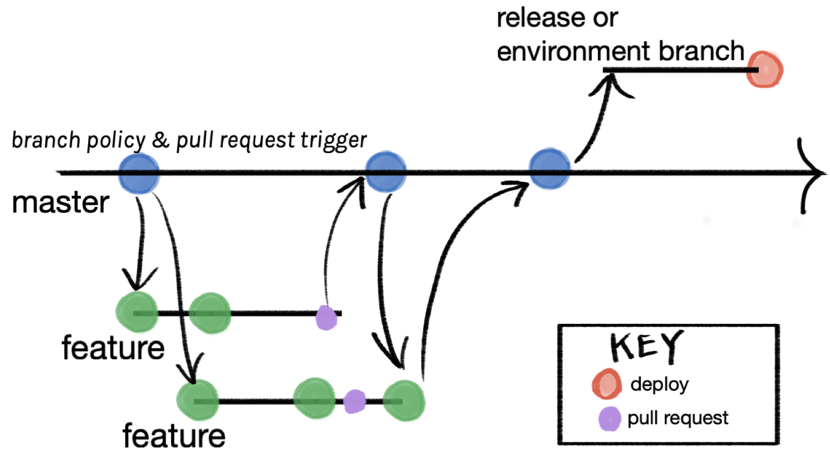How to Filter RPC_Completed Events in Extended Events: SQL Server Guide
The rpc_completed event in Extended Events is useful when troubleshooting SQL Server performance. It captures detailed information about Remote …
When people begin applying DevOps principles to database development using Redgate tooling, often one of the first steps in the process involves getting database code into version control. Questions naturally come up about how to manage the flow of changes to database objects from development into production once changes begin occurring.
When using Git for version control, branches are a huge help when it comes to managing this flow.
But how do you use branches? It’s helpful to pick a strategy. There are many fine Git branching strategies out there, things like GitFlow and GitHub Flow and more – enough that it’s overwhelming to learn about these when you are just starting out.
The strategy that I recommend for folks who are starting out with database DevOps and Git is the Azure DevOps team Release Flow model with dedicated development databases. (Why dedicated development databases? Read more here.)
Further, the release flow model can support both small and large teams.

For instance, for those who have implemented a microservices model with robust automated testing in place, it may be more suitable to do something like a modification of the GitHub flow branching strategy.
But that’s not the case for most folks – most folks have databases which are more complex, with cross-database queries and downstream dependencies galore. For these more ordinary databases, the Azure DevOps Release Flow model is a really great place to begin.
Copyright (c) 2025, Catalyze SQL, LLC; all rights reserved. Opinions expressed on this site are solely those of Kendra Little of Catalyze SQL, LLC. Content policy: Short excerpts of blog posts (3 sentences) may be republished, but longer excerpts and artwork cannot be shared without explicit permission.